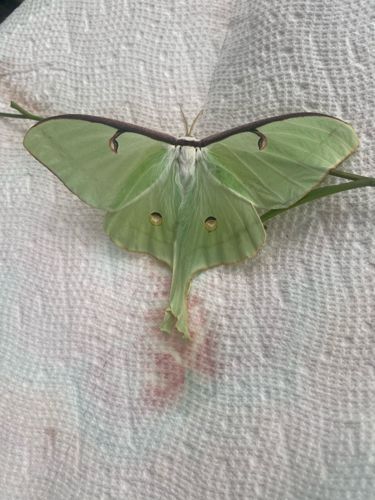Luna Moth
Scientific Name: Actias luna
Order & Family: Order: Lepidoptera, Family: Saturniidae (Giant Silkworm Moths and Royal Moths)
Size: Wingspan typically ranges from 3 to 4.5 inches (7.5 to 11.5 cm), making them one of the largest moths in North America.

Natural Habitat
Luna Moths are found in deciduous forests across North America, from eastern Canada and the Great Plains to northern Mexico. They prefer wooded areas with their host trees.
Diet & Feeding
Adult Luna Moths do not feed. Their mouthparts are vestigial (non-functional). Larvae (caterpillars) feed on the leaves of various deciduous trees, including sweetgum, hickory, sumac, persimmon, and birch.
Behavior Patterns
Adults are nocturnal and active primarily at night. They emerge from cocoons and typically live for about a week. Their primary goal as adults is to mate and lay eggs. They do not feed. Mating usually occurs in the late night hours, and females begin laying eggs shortly after. Larvae (caterpillars) are voracious feeders, molting multiple times before pupating in a silk cocoon, often among leaves on a host tree.
Risks & Benefits
Risks: None to humans. Luna moths are harmless. Benefits: As larvae, they can be part of the food chain for birds and other insectivores. As adults, they play a minor role in pollination, though their lifespan is extremely short and their primary function is reproduction.
Identified on: 8/10/2025